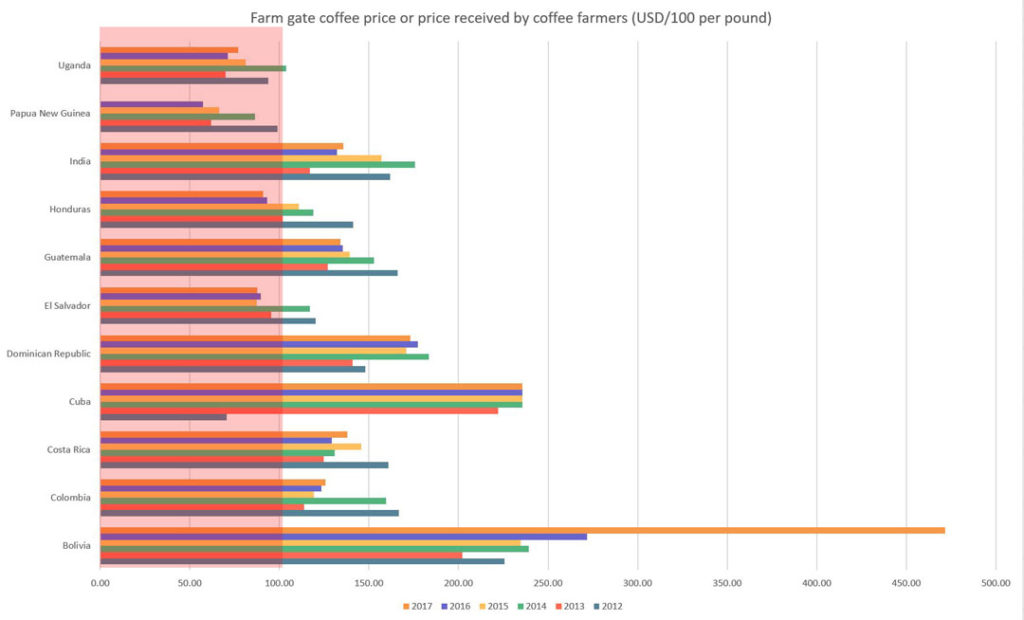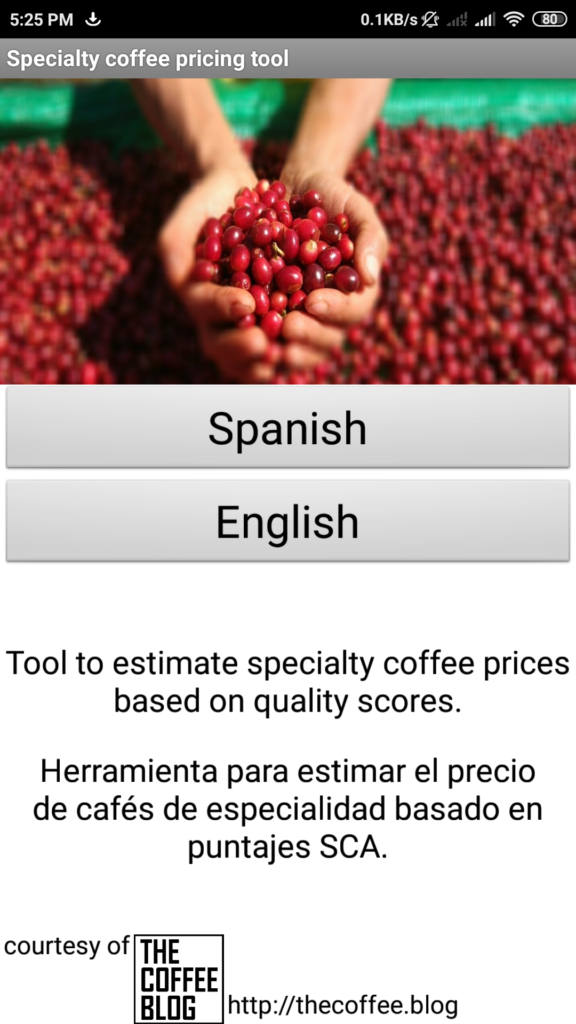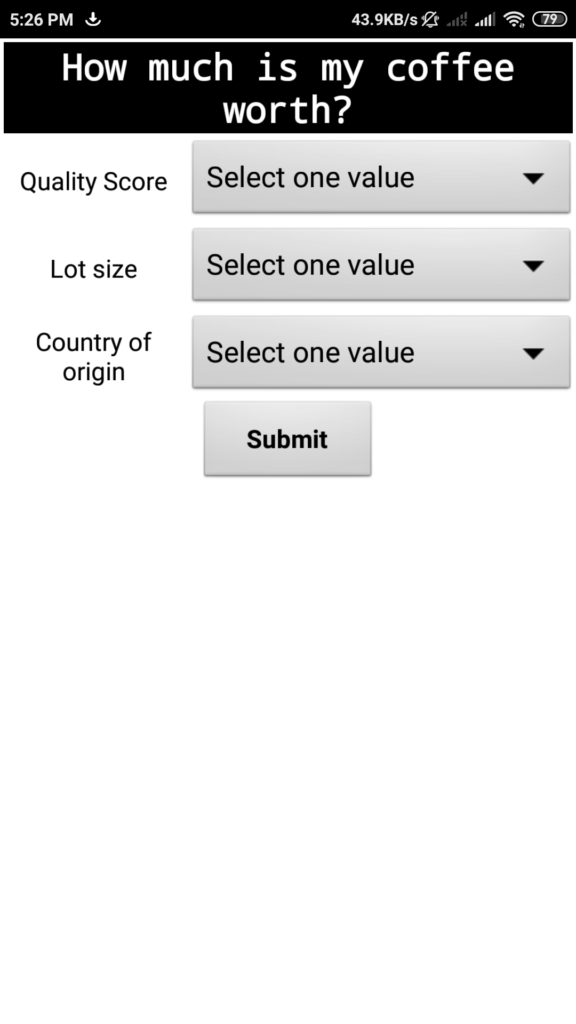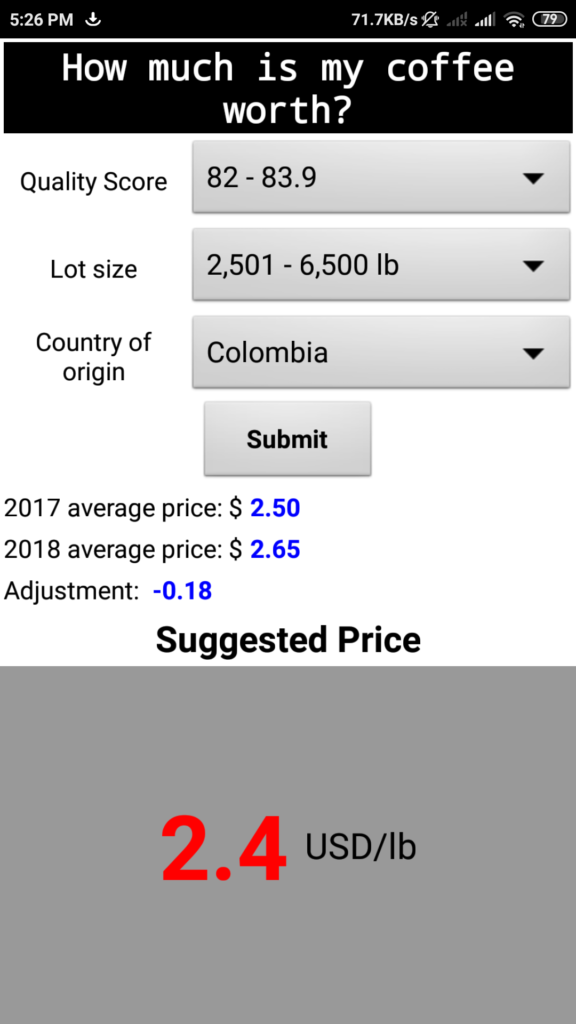“If you have been reading my previous posts, by now you should understand how current coffee commodity prices don’t represent the actual global coffee value, especially for those coffee growers who go the extra mile, investing labor, capital, innovation, knowledge and skill to produce specialty coffee.”
It is easy to criticize the industry though, and point fingers at whoever we feel is responsible for the situation. Instead, we should be more proactive focusing our attention on finding alternative indicators, coffee farmers and ethical coffee buyers could use to price the coffee they buy or sell.
What are these better indicators?
Farm gate coffee prices: The international coffee organization (ICO) since it stopped having the important role of controlling the international coffee price after the International coffee agreement (ICA) broke down in 1983, has become one of the few institutions who collect, centralize and publish useful data about global coffee statistics in a regular basis. Among all the data found for download at their website, (www.ico.org) there is a free and public download called “price paid to growers” (PPG) .
This data basically summarizes yearly farm gate coffee prices by country. Unfortunately PPG is not a perfect indicator, usually because farm gate prices do not include milling and exporting costs, and based on statements coming from the ICO itself, these reports are developed based on unverified data producing countries voluntarily provide to the ICO, so its level of accuracy is questionable. Additionally, the data combine specialty coffee prices with commodity coffee prices that in many instances have a significant price gap in between that could alter how representative those average values are. Nevertheless, this indicator with all its flaws is an excellent coffee price reference if we compare it to the commodity coffee “C price” we use today.
SEE ALSO: How coffee prices below $1.00 affect coffee farmers?

Farm gate coffee price chart (table A)
Table A, is a chart made out of the current price paid to growers data available for download at ICO, the length of each bar represents a price in cents (0.01 USD ) paid to growers in a given year. The shaded red area corresponds to the current commodity coffee price (around $1.00 early 2019) to be used as a reference.
At a first glance we can easily conclude, most of these countries are selling their coffee at prices way superior to the commodity price, only with the exception of Uganda and Papua New Guinea where prices are still below the commodity limit. It is important to reiterate and underline these prices do not include dry-milling and exporting fees so the FOB price for all of them would be definitely higher.
FOB price: FOB stands for “free on board” and it is basically the price for coffee that’s ready to ship, including milling and exporting fees. It is the price coffee buyer’s use for any transactions they make and the price symbolized by the “C” market. Nonetheless, this price also have its limitations. In many countries the FOB price doesn’t represent the actual price paid to growers. It is well known that in countries like Brazil, coffee growers can make up to 90% of the FOB price while countries like Uganda, roughly make 30% of it. Fortunately, this is where the coffee price paid to grower’s (PPG) data we explained previously comes handy. If we divide FOB by PPG we will identify how large is the share from FOB price that actually goes back to farmers. Useful information indeed.
Another, limitation of the FOB price is that until now there are no public statistics or records we can easily access, download and/or analyze, this information is not public and usually records are kept private by coffee buyers and roasters mainly because their availability could be considered strategic and a liability for these companies.
Fortunately, coffee farmers are not alone in their struggle to find price indicators that actually represent the value of their coffee. Recently, several roasters and importers have organized to make this crucial information public.
One of these initiatives is www.transparenttradecoffee.org where coffee roasters and buyers can sign up and make their coffee pricing and sourcing structure totally transparent and available to the world. This is huge and paramount for the future of the specialty coffee industry and shows a clear willingness of collaboration between coffee roasters and coffee producers. In their website the price per pound paid by several companies and the percentage of that amount that goes back to farmers are totally public by anyone without needing to sign up and totally free. Truly remarkable.
Meanwhile, researchers at Emory University, took the price transparency initiative even further by creating the Specialty Coffee Transaction Guide (it can be downloaded here: https://www.transactionguide.coffee). In this case researchers obtained access to thousands of contracts from data donors comprised by several influential coffee roasters and importers, who voluntarily donated this information to develop a full guide that not only discloses prices but also correlates the information to SCAA cupping scores, volumes and countries of origin, giving a deeper understanding of coffee pricing structure in today’s coffee industry where quality standards and traceability are key.
SEE ALSO: Why is the coffee market price so low?
I personally feel these two initiatives are revolutionary, because for years the coffee industry in consuming countries has profited and thrived while coffee growers at producing countries have experienced a permanent recession and regardless of their privilege position, roasters and importers for the first time in history have done something selflessly for the good of the entire coffee value chain and the future of specialty coffee.
Although, the Specialty Coffee Transaction Guide is groundbreaking, I don’t see how a PDF file format could be handy and practical for coffee growers/buyers everyday use, so I took the liberty to develop an Android application that simplifies this issue.
It is basically a calculator that provides coffee pricing based on origin, lot’s volume and SCAA cupping scores. It can be downloaded here:


Coffee price app 
Although, these initiatives are definitely a step forward in the right direction to a more ethical and less exploitive coffee industry where coffee grower’s effort and skills are definitely rewarded. It is important to keep in mind specialty coffee represents a tiny fraction of the global coffee industry so unfortunately this is not the end of the problem but at least the beginning of a transition to a more transparent and empathetic relationship between coffee buyers and coffee producers.
Cheers for that!!
